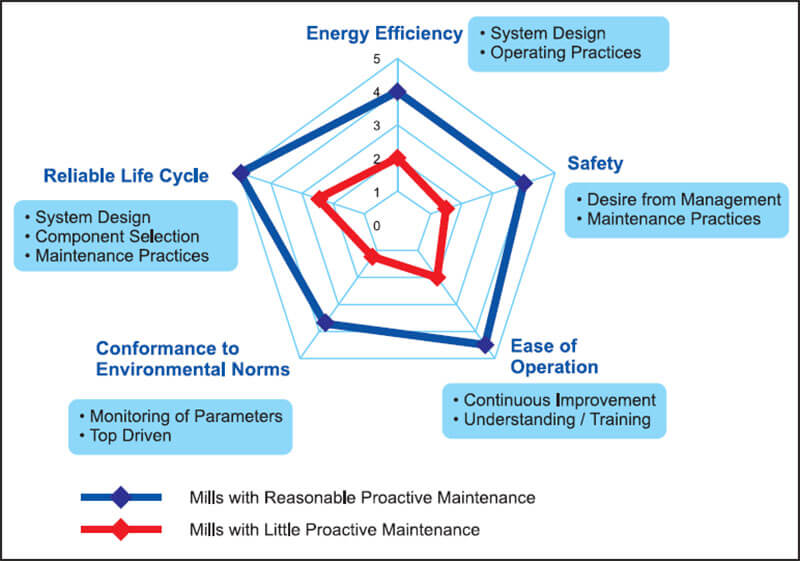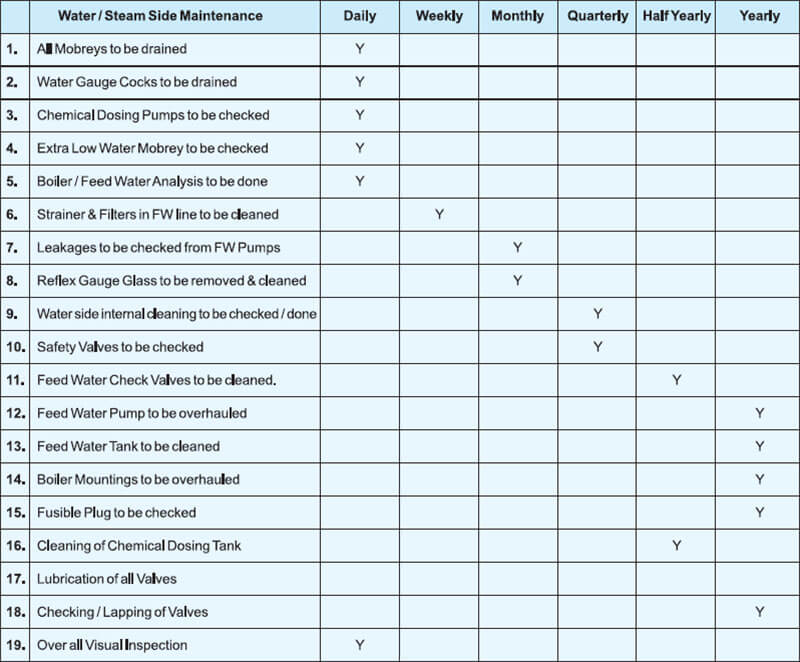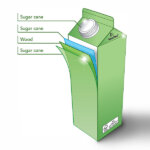

Vice President, CII, Director, Forbes Marshall Private Limited, Pune
Delivering the keynote address at the IPPTA seminar, Dr. Naushad Forbes, Vice President, CII, Director, Forbes Marshall Private Limited, Pune, said, “I have been trying to figure out what I could say that would add value to a seminar on ‘Best maintenance practices in pulp and paper mills to improve profitability’. The best I could do is to share with you some of the insight our organisation has gained as it has worked to improve the operation of steam systems across paper mills in India and overseas. I have been given to understand that the international plant uptime benchmark from TAPPI is 93 percent. Against that we range between 80 and 93 percent.
“I will make two points: Customer needs have led us to define new business, in particular new service businesses; and second, the road from reactive maintenance to preventive maintenance to predictive maintenance is difficult and long and as much about mindset and culture as about anything technical.
“Let’s consider the first point. For over 65 years we have provided process industry with a range of products that improve steam system efficiency. About twenty years ago, we started doing audits of steam systems, a service we now conduct worldwide. As we have done more and more audits (we claim to do more steam audits annually than any other firm worldwide), we have built up a lot of industry-data that lets us compare across plants in the same industry. Together with CII we have done work to benchmark plants in the same industry on energy consumption. We have found some interesting data. First, the gap between the average plant and the best plant is around 21 percent. It was 21 percent 10 years ago, and after a lot of improvement, it is still 21 percent today. Second, the gap arises from a mix of factors – installing the right energy conservation equipment is necessary, but it is not sufficient. For example, in the solvent extraction industry plants in general have a specific fuel consumption of 120 kg of husk/tonne. With just the trapping and condensate return addressed, the specific fuel consumption improves to 100 kg of husk/tonne. And for plants where we have also worked on good engineering practices in maintenance, we have reduced the specific fuel consumption to 75 kg of husk/tonne. Third, however, the gap is not only a matter of the right equipment. I like to say that buying a highly efficient steam boiler does not necessarily mean one has highly efficient steam generation. How one operates the boiler is just as important. Compare solid fuel boiler efficiency. A typical FBC boiler operates at an efficiency of 65 percent – we have data for any number of installations across the country. With the right monitoring equipment and operating practices, this efficiency can be improved to around 75 percent. Our new forbesvyncke boilers routinely operate at 80 percent on biomass, but that is because they are completely automated, and they will simply not operate if doors are not sealed, combustion measurement is defective, or the ash removal system jams.

“As these gaps have become clear to us, we have responded with the new service offerings. For example, our steam system management service is an ongoing engagement to sustain energy efficiency and build competence and good engineering practices in the plant.
“In just the last few months, we have developed a product, Ever Sense, explicitly to help a customer improve plant uptime through improved utility performance. The product has already moved the plant from the reactive to preventive mode, and we are now working on a predictive solution.
“Let’s us now look at the second point. We recently conducted a survey of paper mills on maintenance practices for steam systems. The findings are quite instructive: First, 85 percent of plants maintained manual logs of key operating data. Second, plants routinely sacrificed efficiency for uptime; for example, by opening bypasses instead of solving the real problems. Plants with both the best uptime and efficiency had installed diagnostic equipment (boiler efficiency analysers, steam meters, moisture control, pressure monitoring and control) to know real-time how well the system was performing. Third, over 80 percent of plants either had no maintenance budget or had a maintenance budget under Rs. 100,000 per year, and that for a typical fuel bill above Rs. 5 crore annually. Fourth, preventive maintenance was focused on the paper machine, not on the steam system. 70 percent of plants said they replaced parts when they broke, not before. We are now working to build just such a preventive schedule into plant operations and to add intelligent diagnostic so steam equipment can monitor itself. And lastly, safety is receiving increasing priority – a very encouraging sign. Roughly, a third of plants now cite safety as the number one maintenance priority.

“I hope these comments from steam systems help our understanding not only of the concerns in maintenance but also show how much potential exists. I have been given to understand that average paper machine uptime in India is around 10 percent lower than the TAPPI benchmark – that means we can get around 12 percent more paper manufacturing capacity for free – with all the attendant benefits in efficiency and quality. A focus on maintenance may not sound very exciting, but the potential is great.”



